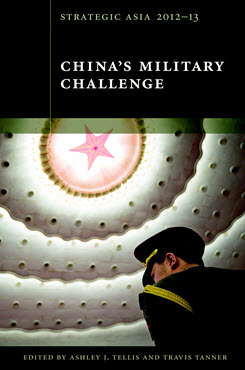China's Land Forces
New Priorities and Capabilities
This chapter examines the missions, force structure, and capabilities of the PLA ground forces and assesses their relative importance and future roles in China’s accomplishment of its security goals.
EXECUTIVE SUMMARY
This chapter examines the missions, force structure, and capabilities of the PLA ground forces and assesses their relative importance and future roles in China’s accomplishment of its security goals.
MAIN ARGUMENT
China’s national security goals have grown in scale and geographical scope with the increase in its overall comprehensive national power. The once-central role for the ground forces in defending China’s national sovereignty is diminishing as China’s regional neighborhood poses fewer direct threats that would require a large standing army. Meanwhile, China’s increasing overseas interests are largely secured by the other services, especially the navy. The PLA ground forces nonetheless retain a critical role as the force of last resort in defending the Chinese Communist Party, especially against internal challenges, and are modernizing, albeit at a modest and somewhat uneven pace. The result is a force structure and set of capabilities that are tailored to the challenges and opportunities found in each of the subregions that border China.
POLICY IMPLICATIONS
- The current structure and capabilities of the PLA land forces allow for only limited power projection, largely because of mobility shortfalls. Improvements and increases in the helicopter force would enable the PLA to more rapidly project land power throughout China and potentially into border regions.
- Changes to the structure of military regions would signal changes in the operational orientation of the PLA, including likely greater priority for the other services.
- That the PLA land forces apparently have little operational interaction with the Korean People’s Army suggests that the PLA is not preparing to assist the North Korean leadership in the event of a crisis but would respond to crises unilaterally.
China’s place as the preeminent continental power of Asia is well established. The historical “middle kingdom” has been master of the eastern half of the Eurasian land mass since antiquity. Integral to China’s historical supremacy in the region were the fundamental advantages its military forces enjoyed by means of interior lines—China is in the center of Asia—and the continental depth afforded by being Asia’s largest country.
With the arrival of the Chinese Communist Party (CCP), and later the establishment of the People’s Republic of China (PRC) in 1949, China’s People’s Liberation Army (PLA) under Mao Zedong appropriated these advantages into the CCP’s “people’s war” doctrine. Indeed, Mao’s famous dictum to “draw the enemy in deep” was simply the mid–twentieth century adaptation of the established military advantage available to a big country surrounded by other potentially competing states with long, and at times difficult to defend, borders.
People’s war also essentially reflected the inherently defensive approach to China’s national security, in which the central task after the formation of the PRC in 1949 was seen to be the consolidation and defense of what then constituted China. In the process, national defense became intertwined with national psychology, such that people’s war was also understood as a popular and necessary response to China’s “century of humiliation” suffered when a weak China was unable to defend its borders. [1]
This defensive approach and orientation gave rise to a set of missions for the PLA that reflected a ground force–intensive approach to national defense. These missions were hardly unique for a post-revolutionary state consolidating power and, moreover, could be accomplished with available resources (particularly once China became a nuclear power and established its own limited nuclear deterrent in 1964). The missions of the PLA for the first 40 years of the PRC were the following:
- Maintain the leadership of the CCP, in the process providing for domestic stability and the deterrence of political chaos, and suppress large-scale political action against the party
- Defend at or near China’s north and northwest frontiers against continental invasion from the Soviet Union and its satellite states
- Defend the northeastern border against invasion into China from the Korean Peninsula
- Defeat invasion from the coast by preparing to conduct strategic withdrawals until an invading enemy is stretched out and is vulnerable to counterattack
- Contribute to national construction, primarily through infrastructure development
By the mid-1980s, the PLA was an army-centric force nearly four-million strong, whose large infantry-based formations were essentially static, geographically based forces with limited organic transportation. Great emphasis was placed on the garrison functions of the ground forces that played an important role in national construction. Emblematic of this mindset was the mission of the Xinjiang Production and Construction Corps. The corps was essentially an organization of demobilized PLA units that remained in China’s northwest after the incorporation of the Xinjiang Autonomous Region into the PRC in 1949 in order to contribute to economic development, build up agricultural production, maintain stability in this potentially restive minority region, and enhance border defense. [2]
Endnotes
[1] That the strategic orientation of China’s ground forces is primarily defensive should not be construed to mean that the PLA eschews offensive action. Quite the contrary, the doctrine of “active defense” mandates offensive action as a means of seizing the initiative even within the context of an overall defensive action. See Dennis Blasko, The Chinese Army Today: Tradition and Transformation for the 21st Century, 2nd ed. (New York: Routledge, 2012).
[2] Information Office of the State Council of the People’s Republic of China, History and Development of Xinjiang (Beijing, May 2003), section 9, http://www.china.org.cn/e-white/20030526/9.htm.
Strategic Asia
The Strategic Asia annual edited volume incorporates assessments of economic, political, and military trends and focuses on the strategies that drive policy in the region. Learn more about Strategic Asia.


